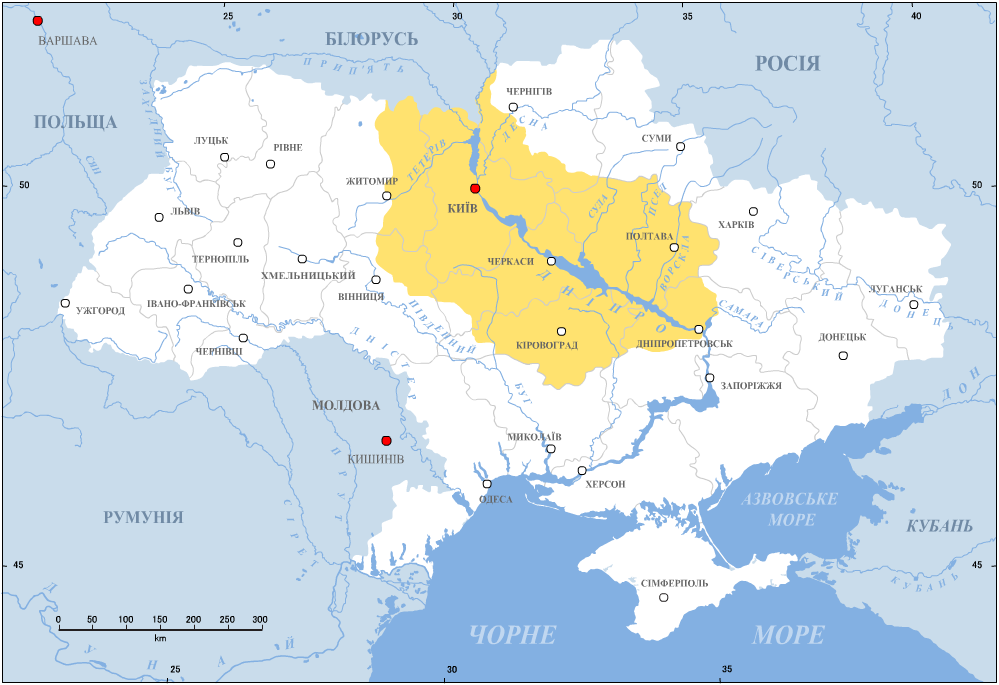Dnieper Ukraine on:
[Wikipedia]
[Google]
[Amazon]
 The term Dnieper Ukraine
(: "over Dnieper land"), usually refers to territory on either side of the middle course of the
The term Dnieper Ukraine
(: "over Dnieper land"), usually refers to territory on either side of the middle course of the
Dnieper Ukraine
Encyclopedia of History of Ukraine. {{coord missing, Ukraine Historical regions in Ukraine
 The term Dnieper Ukraine
(: "over Dnieper land"), usually refers to territory on either side of the middle course of the
The term Dnieper Ukraine
(: "over Dnieper land"), usually refers to territory on either side of the middle course of the Dnieper River
}
The Dnieper () or Dnipro (); , ; . is one of the major transboundary rivers of Europe, rising in the Valdai Hills near Smolensk, Russia, before flowing through Belarus and Ukraine to the Black Sea. It is the longest river of Ukraine an ...
. The Ukrainian
Ukrainian may refer to:
* Something of, from, or related to Ukraine
* Something relating to Ukrainians, an East Slavic people from Eastern Europe
* Something relating to demographics of Ukraine in terms of demography and population of Ukraine
* So ...
name derives from ''nad‑'' (prefix: "above, over") + ''Dnipró'' ("Dnieper") + ''‑shchyna'' (suffix denoting a geographic region).
The term ''Dnieper Ukraine'' appeared soon after the partitions of Poland
The Partitions of Poland were three partitions of the Polish–Lithuanian Commonwealth that took place toward the end of the 18th century and ended the existence of the state, resulting in the elimination of sovereign Poland and Lithuania for 12 ...
when Ukraine as former territory of the Polish–Lithuanian Commonwealth
The Polish–Lithuanian Commonwealth, formally known as the Kingdom of Poland and the Grand Duchy of Lithuania, and, after 1791, as the Commonwealth of Poland, was a bi-confederal state, sometimes called a federation, of Crown of the Kingdom of ...
became divided between the Russian Empire
The Russian Empire was an empire and the final period of the Russian monarchy from 1721 to 1917, ruling across large parts of Eurasia. It succeeded the Tsardom of Russia following the Treaty of Nystad, which ended the Great Northern War ...
and Austrian Empire
The Austrian Empire (german: link=no, Kaiserthum Oesterreich, modern spelling , ) was a Central- Eastern European multinational great power from 1804 to 1867, created by proclamation out of the realms of the Habsburgs. During its existence, ...
and was referred to the Russian controlled Ukraine. The term was phased away soon after 1939.
Ukrainians
Ukrainians ( uk, Українці, Ukraintsi, ) are an East Slavic ethnic group native to Ukraine. They are the seventh-largest nation in Europe. The native language of the Ukrainians is Ukrainian. The majority of Ukrainians are Eastern Ort ...
sometimes call it Great Ukraine (). The term is mentioned in the Ukrainian Unification Act where it says: "From now on into one merge torn away one from other portions of United Ukraine, the West-Ukrainian People's Republic (Galicia, Bukovina, Ugric Ruthenia) and the Dnieper Great Ukraine (''Од нині во-єдино зливаються століттям одірвані одна від одної частини єдиної України - Західно-Українська Народня Республіка (Галичина, Буковина; Угорська Русь) і Наддніпрянська Велика Україна''). Historically, this region is tightly entwined with the history of Ukraine
Ukraine ( uk, Україна, Ukraïna, ) is a country in Eastern Europe. It is the second-largest European country after Russia, which it borders to the east and northeast. Ukraine covers approximately . Prior to the ongoing Russian inva ...
and is considered as the heart of the country.
The Museum of Folk Architecture and Way of Life of Central is located in Pereiaslav
Pereiaslav ( uk, Перея́слав, translit=Pereiaslav, yi, פּרעיאַסלעוו, Periyoslov) is a historical city in the Boryspil Raion, Kyiv Oblast ( province) of central Ukraine, located near the confluence of Alta and Trubizh ri ...
. This open-air museum
An open-air museum (or open air museum) is a museum that exhibits collections of buildings and artifacts out-of-doors. It is also frequently known as a museum of buildings or a folk museum.
Definition
Open air is “the unconfined atmosphere� ...
contains thirteen themed museums, one hundred twenty two examples of national architecture, and over thirty thousand historical cultural objects.
Geographically, the term refers to territory of Ukraine along Dnieper
}
The Dnieper () or Dnipro (); , ; . is one of the major transboundary rivers of Europe, rising in the Valdai Hills near Smolensk, Russia, before flowing through Belarus and Ukraine to the Black Sea. It is the longest river of Ukraine an ...
. Due to its size, the region is conditionally subdivided into Upper Dnieper Ukraine, Central Dnieper Ukraine, and Lower Dnieper Ukraine in reference to Dnieper's stream flow. Upper and Central separate at mouth of Desna River
The Desna (russian: Десна́; uk, Десна) is a river in Russia and Ukraine, a major left- tributary of the Dnieper. Its name means "right hand" in the Old East Slavic language. It has a length of , and its drainage basin covers .
which is roughly the city of Kyiv
Kyiv, also spelled Kiev, is the capital and most populous city of Ukraine. It is in north-central Ukraine along the Dnieper River. As of 1 January 2021, its population was 2,962,180, making Kyiv the seventh-most populous city in Europe.
Ky ...
, while Lower and Central around Khortytsia
Khortytsia ( uk, Хортиця, Hortycja, translit-std=ISO, ) is the largest island in the Dnieper river, and is long and up to wide. The island forms part of the Khortytsia National Park. This historic site is located within the city limi ...
which is roughly the city of Zaporizhia
Zaporizhzhia ( uk, Запоріжжя) or Zaporozhye (russian: Запорожье) is a city in southeast Ukraine, situated on the banks of the Dnieper River. It is the administrative centre of Zaporizhzhia Oblast. Zaporizhzhia has a populatio ...
.
References
External links
* Vermenych, Ya.Dnieper Ukraine
Encyclopedia of History of Ukraine. {{coord missing, Ukraine Historical regions in Ukraine